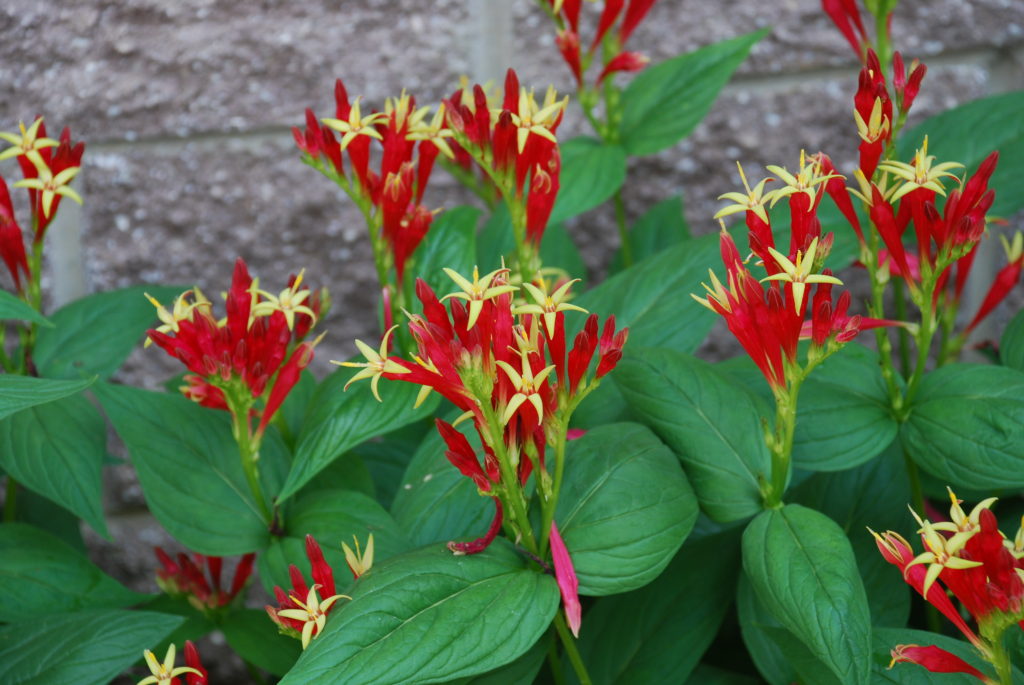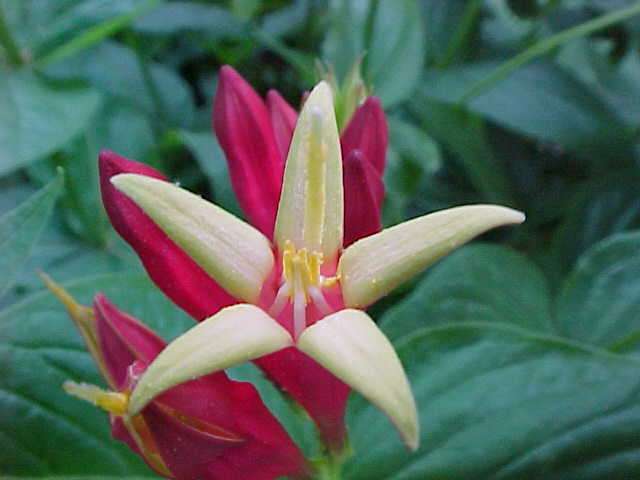Indian Pinks Generate Garden Fireworks

Indian pink (Spigelia marilandica) is a strikingly beautiful native wildflower native to the Southern Appalachian region. However, this perennial grows well in most parts of the country (Zones (5b)6-9). Plants emerge quite late in the spring. Sometime in June, depending on locality, their bright red tubular flowers flare open, crowned by five sharply pointed pale yellow reflexed lobes. By the 4th of July flowers will produce floral fireworks in your garden.
Indian pink prospers around a rich moist open woodlands or shade garden. They grow equally well in mixed containers. Plant in a well-drained, mildly acidic soil that is generously amended with compost or humus. A partially sunny site in full morning to dappled sunlight is perfect. Irrigate during dry periods and do not allow plants to stand in water.
In older plantings vigorous plants will grow 2 to 3 feet tall. Leaves are
are arranged opposite on the stem, attached directly to the main stem (no petioles), ass well as an entire (toothless) margin. Plants stand erect and are rarely branched.

New plantings of Indian pink often start off slowly, taking 2-3 years to reach maximum flowering. Create a dazzling display by setting five or more plants en masse. Over the years in good humus-rich soil, Indian pinks often naturalize and look stunning. Flowering time is extended over several months by swift removal of the old spent flowers (deadheading).
The brightly colored flowers attract numerous pollinating insects and hummingbirds. No disease and pest problems cause Indian pink any troubles.
The popularity of Indian pinks continues to increase. In recent years, the U.S. native plant industry have been bulking up plant inventories. Tissue culture labs are also producing them. ‘Little Redhead’ is a superior vegetatively propagated strain that grows very uniformity.

 Posted in
Posted in 
